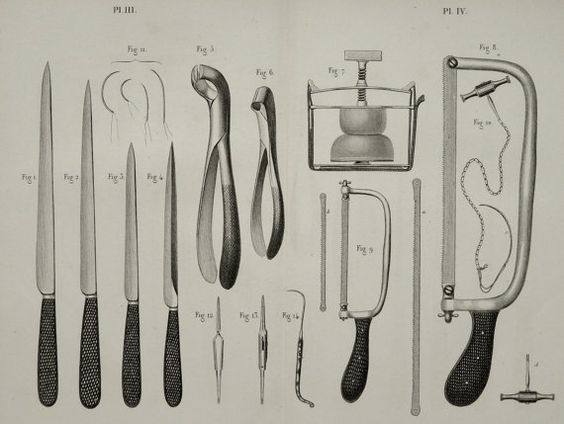Health has always been Men’s concern. So doctors and medicines existed even in ancient times. Amputation, according to medical dictionary is the removal of part or all of a body part enclosed by skin. For example, removal of part of a finger or an entire finger would be termed an amputation. Amputations were conducted in the Victorian era with equipment like knives and swords!


Credit: Wellcome Library, London.
Surgery was without anesthesia
The operations of ancient days were quick and painful. Modern technologies such as anesthesia have not been developed. And, even doctors were not well aware of the disease. Both the doctors and the laymen had only vague ideas about germs, infections, and diseases.
Not all medicines were safe! Amputation was prevalent during periods of war. Three of every four operations were amputations. When an amputation was performed, the patient was given wine to drink so that the pain would be reduced. The doctor also soaked a rag with chloroform and applied it to the patient’s mouth and nose.

Credit: Wellcome Library, London.
He would, however, need to periodically remove the rag to avoid chloroform poisoning from occurring. The surgeon first used a tourniquet to tie off the blood flow. Then he used a scalpel to cut through the skin, flesh, and outer tissue, after which he used a saw to cut through the bone.

In the early years of the 19th century, the doctor finished the surgery by cauterizing the veins and arteries, then sealed the limb with hot tar so that it would not bleed. Hospitals rooms were dark, dim and unclean.
Many patients died of shock or terrible pain after the surgeries. The first surgical clamp was a device known as the crow’s beak that could be clamped across an artery to block the flow of blood. Robert Liston was a foremost surgeon of the Victorian era.